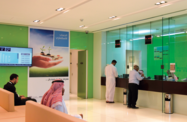A government push to enforce stronger uptake of compulsory health and automotive coverage could generate substantial new business in Saudi Arabia’s insurance sector, deepening the industry’s premium pool and strengthening its asset base.

On April 10 the fourth phase in a year-long legal effort to boost compliance came into effect, requiring all companies with less than 25 employees to join larger firms in providing health insurance for their staff.
The “unified health insurance policy” was approved by Cabinet decision on April 14, 2016 and carried out in four stages by the Council of Cooperative Health Insurance, a state agency.
Three previous phases mandated full compliance with health insurance laws under varying grace periods – three, six and nine months, respectively, for firms with 100-plus, 50-99 and 25-49 employees – according to global law firm Clyde & Co.
Since passing the Cooperative Insurance Law in 2006, the Kingdom has transformed its insurance sector from a largely unregulated industry into what is now the GCC’s largest market for non-life and health insurance, according to a February report by S&P Global, the research arm of ratings agency Standard & Poor’s.
While growth in gross written premiums was modest last year, rising 0.5% to SR35.8bn ($9.55bn), net income increased by 139% to SR2.5bn ($670m).
Market in waiting
The potential market from a further rise in compliance could be significant in the long term.
According to official estimates, some 2.5m Saudi nationals working in the private sector do not have employer-provided health insurance as required by law. Local media reports suggest the same may be true for another 870,000 foreign workers and their dependents. Taken together, these groups represent more than 10% of the Kingdom’s population of 31.5m.
Similar potential exists in the automotive segment: S&P Global estimates more than half of all vehicles in the Kingdom are uninsured, in breach of the law.
Efforts to boost enforcement in both these areas of coverage should spur growth in the sector, according to David Anthony, lead credit analyst at S&P Global.
“The Saudi insurance market is likely to see only modest growth at best in 2017, largely fuelled by the authorities’ pursuit of motorists and employers that have so far not taken out the cover required under Saudi law,” Anthony told media last month.
According to the most recent figures from reinsurance firm Swiss Re, Saudi Arabia’s insurance penetration stood at 1.51% in 2015, well below Bahrain’s 2.5% and the UAE’s 2.4%. This underscores vast long-term potential in what is the GCC’s largest economy, with a GDP of $639.6bn in 2016, according to the IMF.
Beyond health and motor insurance, a further segment that could see higher levels of activity in the future is homeowner’s insurance, thanks to moves by financial sector regulator Saudi Arabian Monetary Authority to boost access to mortgages.
In January the agency announced it was raising the ceiling on loan-to-value ratios for first mortgages from 70% to 85% of the listed property price – a move it hopes will bring new buyers into the market and could drive fresh demand for property insurance.
Crowded field
Any gains on the horizon for the sector may, however, be spread thinly, particularly among second-tier firms seeking to compete with larger ones – there are more than 30 insurers operating in the domestic market, a number many analysts consider too high.
This congestion, while a positive for consumers able to benefit from pricing competition, also means many firms have very narrow margins. Some companies are therefore reportedly looking to strengthen their positions through mergers or acquisitions, as has happened in the banking industry.
One recent move towards consolidation occurred in early March, when Gulf Union announced it was in early talks with fellow domestic insurer Al Ahlia about a potential merger. According to a company statement, the two parties hope to negotiate a preliminary agreement over the next 12 months.
In a report released that same month, ratings agency Moody’s said much of the sector’s business is concentrated at the top end, both in Saudi Arabia and across the GCC. It suggested this could impact profitability among smaller firms and increase their exposure to risk as they try to compete with stronger, better-capitalised rivals.


